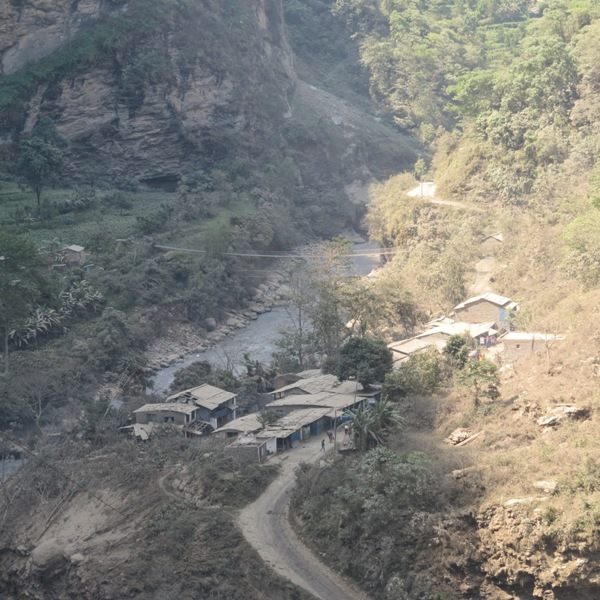A number of landslides have hit Nepal since the 7.8-magnitude earthquake on April 25 which killed more than 8,000 people and injured many more.
The tremor was followed by a 7-3 magnitude quake on May 12.
Thousands of people have fled to safety following a landslide in western Nepal which blocked the flow of Kali Gandaki River.
A massive landslide has blocked Kali Gandaki River at Baisari in Bhagwati VDC of Myagdi district early Sunday morning.
The Kali Gandaki River in Myagdi district, about 90 miles north-west of the capital, Kathmandu, has created a deep and growing new lake.
There are no reports of casualties. Army soldiers are being sent to help.
The landslide around midnight on May 24 has caused water levels to rise by about 600ft.
The landslip has buried 25 houses in Baisari. Panic-stricken locals in Baisari and areas including district headquarter Beni, Ghatan, Benibazar, Galeshwor, Pokharebagar have started to move to higher grounds after the river was blocked by the landslide.
“We have asked villagers along the riverside in these districts to move to safer places,” interior ministry official Laxmi Prasad Dhakal told Reuters news agency.
One of Nepal’s largest hydroelectric power plants in the area could be at risk, officials have warned.
Army helicopter were surveying the area with troops being sent to siphon off the water from the fast-growing lake.
Authorities say large areas could be at risk of flooding if the collected waters burst.
Kali Gandaki River flows into India where it eventually joins the Ganges.
Normally landslide is triggered by rain but in this case, the cracks triggered by earthquake led the debris to fall, according to experts. Rocks, boulders and mud are falling making huge sound.
